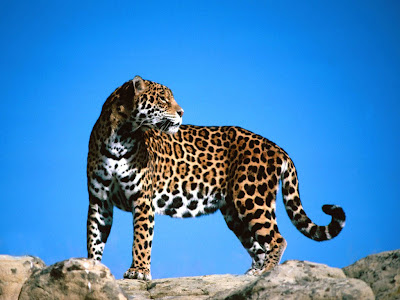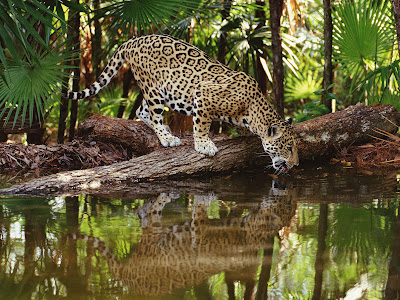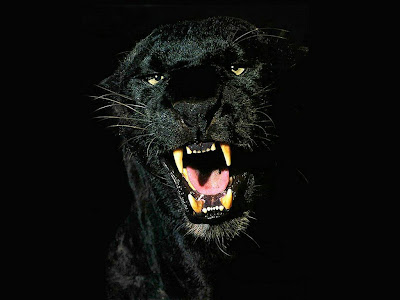 Wild Cat jaguars
Wild Cat jaguarsJaguars, the biggest of
South America's big cats, once upon a time roamed a lot in the
Americas. Today they are observed in just very few distant areas.
Jaguars are the biggest of
South America's big cats. Once upon a time they roamed from the southern tip of that continent north to the region surrounding the
U.S.-
Mexico border. Today substantial numbers of
jaguars are observed only in distant areas of
South and
Central America-in particular in the
Amazon basin.
 South America Jaguar
South America JaguarThese attractive and powerful beasts were dominant in ancient Native American cultures. In some cultures the Jaguar God of the Night was the powerful lord of the underworld. The name jaguar is originated from the Native American word yaguar, meaning "he who kills with one leap."
Unlike a number of other cats, jaguars don't avoid water; in fact, they are rather good swimmers. Rivers offer them food in the form of fish, turtles, or caimans-small, alligator like animals. Jaguars also eat larger animals for example deer, peccaries, capybaras, and tapirs. They often climb trees to create an ambush, killing their prey with one powerful chew.
 Jaguar Wallpaper
Jaguar WallpaperMost
jaguars are tan or
orange with
exclusive black spots, dubbed "rosettes" since they're formed like roses. Some
jaguars are so
dark they seem spotless, although their markings are visible on closer examination.
Jaguars live alone and determine territories of many square miles by marking with their waste or clawing timber.
Females have litters of one to four cubs, that are blind and helpless at birth. The mother stays with them and guards them fiercely from any
animal that might approach-even their very own father.
Young jaguars learn how to hunt by staying with their mothers for two years or more.
Jaguars are even now hunted for their beautiful fur. Ranchers also kill them because the cats occasionally prey upon their livestock.

jaguars in the rainforest

jaguars animal wallpaper

black jaguars animal wallpaper

























